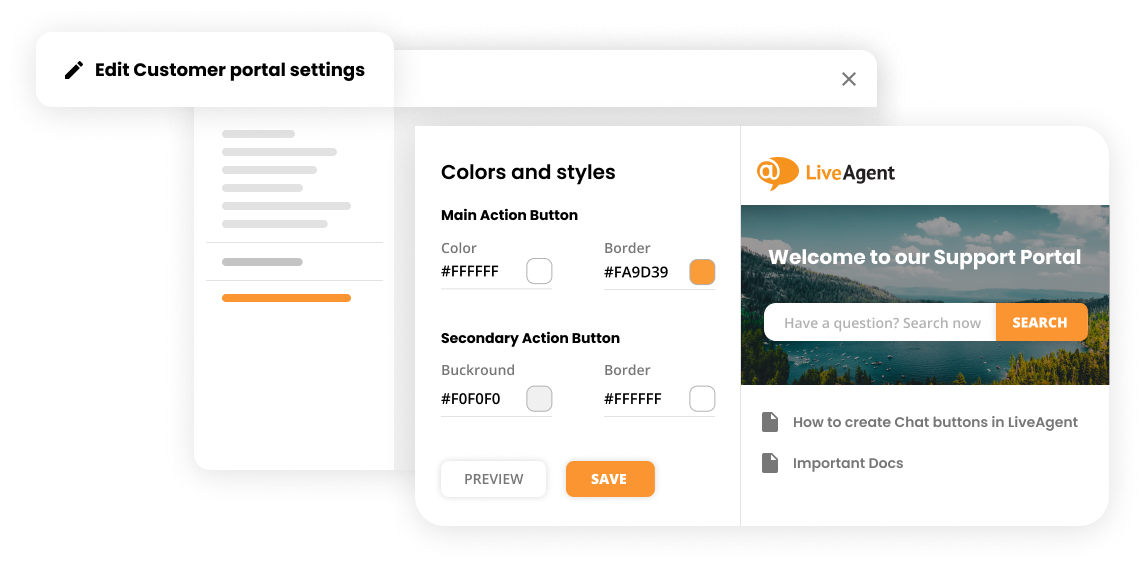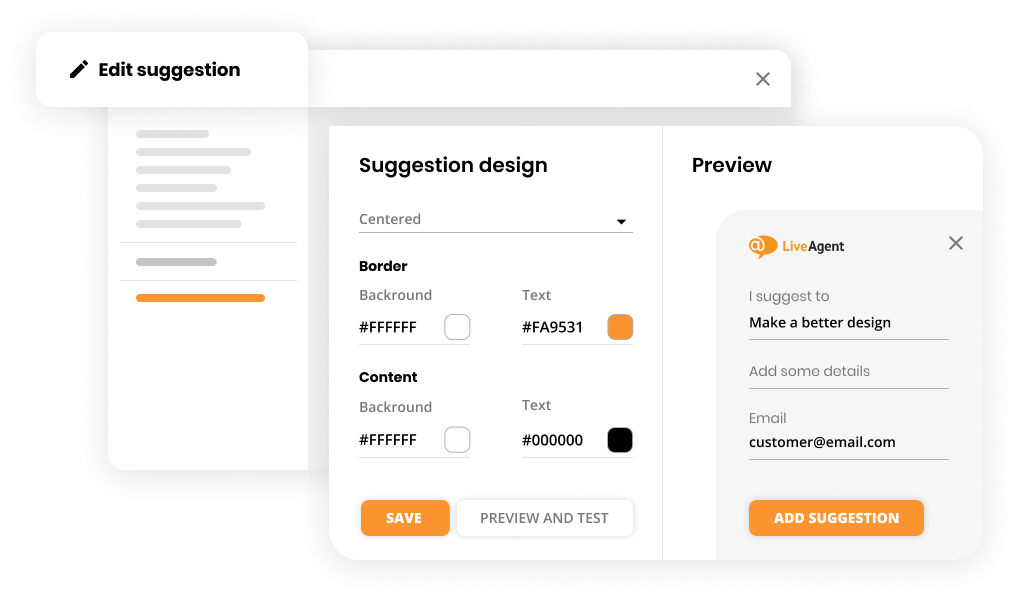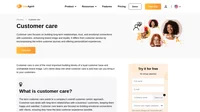What is the difference between personalization and customization?
The difference is in the method of making the customer experience individualized. They both help you provide services in a unique way but they go about it differently.
They both …
…appear to mean the same. Personalization and customization are often used interchangeably because their meanings overlap. And surely, on the basic definition level, they both individualize customer experience, and as such, they are both customer engagement strategies. They both base their individualization on consumer preferences, and their common aim is to create bespoke messages.
But they …
… differ in technology. They utilize distinct technological mechanisms to achieve the same goal. In digital technology, therefore, personalization and customization are not interchangeable.
They differ in terms of required action. Personalization is done for the user, and customization is done by the user. In other words, they differ in the individual user’s level of involvement. In the first case (personalization), you are served a delicious sandwich with no effort involved. In the second (customization), you get to make it the way you want it to be.
Not versus, personalization and customization
These customer engagement strategies are not up against one another as a choice to be made because they have the same goal in marketing campaigns. Only that they achieve it with different tools. Essentially, with more or less intricate automation.
During personalization, harvested data are filtered by algorithms to presume and essentially guess. Whereas the customization process utilizes specifically fed data entered by the user, requiring the selections to be made. Paradoxically the latter is a more ‘personal’ process, causing confusion of the terms.
Personalization
Effective personalization utilizes aggregate customer data methodically to dramatically impact user experience. The impact is striking because the user is not consciously involved in the process.
Smart algorithms scrutinize the characteristics of users and our online behavior. Based on these data, they offer us relevant products, services, or relevant content. An example of personalization is when you receive advertising messages which seem eerily to point or are totally misguided. Like if you get a mouthwatering sandwich, you never knew you wanted, or a vegan burger despite being an omnivore. Algorithms can get it wrong.
The technological step from customization to personalization is actually an abyss. You need powerful algorithms to do personalization well. After all, you don’t want to end up offering your customers a sponge cake.
Customized services
Do you want to present and enjoy an individual approach? Customize. Enhance the user experience by making selections and offering individualized services. Prepare the sandwich yourself.
The future of personalization and customization is here, in offering unique care and memorable experiences, tailoring the user experience to individual needs.
For example: Let us imagine that you work in a customer service team and you are assigned a task you have no clue about. You spend ages searching for the optimal solution whilst your colleague, sitting next to you, could have done the task in a few minutes or told you about it.
Being assigned personalized tasks would feel great at work. Actually, you don’t need powerful algorithms and separate development teams for that. You can set up automation rules to make the selection for you. This way, you are assigned custom-made tasks so that everyone can do what they do best.
Customized Experience
In an age of information overload and overwork, we all welcome focused communication. Every single customer, whether from your customer base or anonymous users, wants to have a positive user experience. And businesses want to provide that. You want to utilize various marketing channels to offer relevant products along with support to your customers when they want it and on their preferred platform.
Customizing now
Technically speaking, while personalization can only be done with powerful algorithms, you can start individualization by customizing right now with real-time personalized marketing.
customer service culture

You can apply real-time personalized services via live chat or email marketing. Whether you are informing in newsletters, promoting new content to customers, or sending out targeted surveying emails, you want them to be individualized. Just as your company tailors imagery to maintain a vivid online presence so it can individualize written texts, emails, and app messages to segmented audiences.
To increase speed and ease your workload, you can use email templates, complete pre-written messages, or app messages. If you target your audience with infographics, you can also follow up with omnichannel support and emails.
How you utilize customization depends on your marketing experience, budget, brand image, vision, and the company direction you intend to take.

Design your own templates
LiveAgent gives you the power to design your own customer email templates, thus helping you to improve the customer service. Curious about all the opportunities?
Watch a video about personalization vs. customization
Personalization and Customization are two different concepts when it comes to customer relations. Personalization is about adjusting the customer experience by understanding their needs and preferences. This includes providing tailored communications and recommendations. Customization is about allowing customers to tailor aspects of a product or service to their individual preferences. LiveAgent is an all-in-one help desk software that enables businesses to offer both personalized and customized experiences to their customers. It allows companies to offer dynamic and tailored solutions to customers by leveraging real-time and past customer data. LiveAgent makes it easy to create an extraordinary customer experience.

Frequently Asked Questions
How do personalization and customization help companies improve customer service?
They improve the customer service by providing more efficient, focused and quicker support. Individualization of the customer service enhances the customer experience, and as such, refines the customer journey. Qualitative improvement of the customer service increases the chances of converting prospects into customers and customer retention.
What is the difference between personalization and customization as applied to e-commerce technology?
Technically, personalization in e-commerce involves algorithms with programmed instructions for specific tasks. They need to be very powerful to target and individualize well. Customization allows businesses and customers to set up automations, that is, to individualized customer support for other businesses and/or customers.
Why personalization is superseding customization?
Because data collection and analysis are becoming more and more sophisticated and available to businesses. Users, too, may find it difficult to make informed decisions on what to select or even on what they want, so they may welcome sophisticated individualization.
After diving into the differences between personalization and customization, you might be curious to explore more about how personalization works in customer service. Check out personalize to learn what personalization means and how it can enhance customer experiences. Understanding how personalization can be tailored to individual needs will give you a deeper insight into creating custom-fit solutions for your clients.
Customer service management explained: Essential tools and techniques
Discover effective Customer Service Management strategies to boost satisfaction, loyalty, and brand reputation. Elevate your customer experience!
Customer service vs. customer support: Differences and tips
Discover the key differences between customer service and support, essential for boosting satisfaction and loyalty. Get expert tips now!
What is customer satisfation: definition + best practices
Discover customer satisfaction strategies to boost loyalty, retention, and brand reputation. Learn best practices and actionable tips today!

 Български
Български  Čeština
Čeština  Dansk
Dansk  Deutsch
Deutsch  Eesti
Eesti  Español
Español  Français
Français  Ελληνικα
Ελληνικα  Hrvatski
Hrvatski  Italiano
Italiano  Latviešu
Latviešu  Lietuviškai
Lietuviškai  Magyar
Magyar  Nederlands
Nederlands  Norsk bokmål
Norsk bokmål  Polski
Polski  Română
Română  Русский
Русский  Slovenčina
Slovenčina  Slovenščina
Slovenščina  简体中文
简体中文  Tagalog
Tagalog  Tiếng Việt
Tiếng Việt  العربية
العربية  Português
Português 







